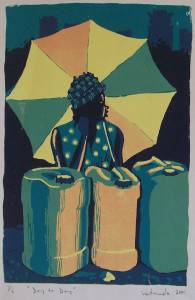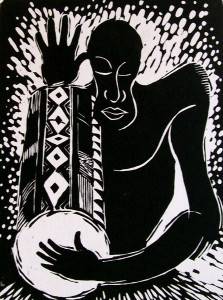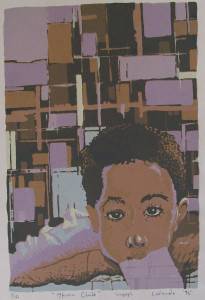Haute Art Scene: African Art Beyond Traditional vs Modern
Salah Hassan describes the common denominator of contemporary art movements in Africa as ‘The search for a new identity expressed in modern forms.’ Indeed, much of African Art scholarship and exposure in the west to date has focused on traditional masks and wooden sculpted figures. Be it at Pace Primitive New York, or the mainstream auction houses Sotheby and Christies if African art is presented at all, it is as a product of an ‘unchanging tribal essence,’ while modern and contemporary contributions remain unexplored. Yet modern and contemporary African Artists are anything but unchanging ahistorical figures and continue to produce work that is an expression of modern Africa today, hybrid, complex with global influences rooted in a rich tradition of artistic expression. It is the translation of this identity that we experience in their work; a world I intend to delve into in today’s continental and diasporic art.
From the heart of the continent, Zambian printmaker Lutanda Mwamba’s work represents a synthesis of contemporary and traditional influences characteristic of numerous African artists constructing new tropes of self-representation. In his lithograph, ‘Day by Day’ we witness modernity’s affect on African urban life, his seated figured ensconced between plastic drums, and a brightly coloured umbrella, clear signifiers of western commercialism stamped in urban settings. Yet, true to the title itself ‘Day by Day,’ the artist normalizes these imports as perfectly mundane, a now habitual part of African city life; the drums may be filled with daily necessities such as petrol or water, their existence by no means novel. The gourd replaced by the plastic drum, natural shade by a synthetic umbrella, the image lends to the pastiche motley of images that define Africa’s urban sphere. With little traditional signifiers in this piece he portrays how normalized and integrated modernity’s commercialism has become.
Lutanda, however, does not fall into the category of artists who have rejected traditional influences entirely, focusing exclusively on western forms. His works rejects the proposition that modernity’s effect on African culture is that of a homogenizing western commercialism that one might assume based on an image like ‘Day by Day’. A broader look at his lithographs furthermore rejects the idea that modernity’s effect is that of a triumph of reason and rationality experienced in the west. In an African context, modernity co exists with traditional ideas, even those of mysticism, magic and faith. A look at his pieces ‘Message Man,’ ‘Ngomba,’ and ‘Messenger’ is rooted in traditional belief, his titles suggesting his musicians are ‘messengers,’ communing with the divine. Whether Lutanda’s inspiration is taken from a real, or imagined past, or even from the present his works point to the survival and continuation of traditional belief in a modern context. This too seems utterly normalized, and yet highly indicative of the realities of modern Africa where a trip to the market place could easily juxtapose a stall of Chinese goods, with a vegetable stand, and a traditional healers hut, without a second thought. The modern, the western- now global, and the traditional coexist, inform each other and create a new hybrid state of being.
Asked to comment on his work, Lutanda would respond that art is a ‘revelation of the self,’ and his piece African Child is particularly moving in what it reveals about the artist himself. Lutanda depicts a child’s face, bodyless beneath an abstract set of rectangular frames. If the search for a new modern identity is the pursuit contemporary African Artists, ‘African Child’ emblematizes and personifies this desire. Indeed the child himself appears symbolic of the artist, peering out in an attempt to define and navigate an identity amidst changing structures both locally and in a global context. It is the artist who is thrusts himself onto the stage of the contemporary art world through the eyes of this child, firmly establishing his place and perspective. In doing so he creates a modern identity, announcing both his struggle and arrival. While his work communicates a consciousness of its past, Lutanda’s work is deeply aware of its present predicament. In African child we see not only a very modern image aesthetically, but a statement by the artist. By placing himself at the forefront of the modern structures depicted, as the child, he establishes himself as an active player in the creation of meaning. Rather than a passive recipient of a myriad of influences, Lutanda presents the artists as an empowered participant in the dialogue of what modernity is and will be for Africa.
Images courtesy of Lutanda Mwamba. For more information please visit the Anajuwa Gallery website.















